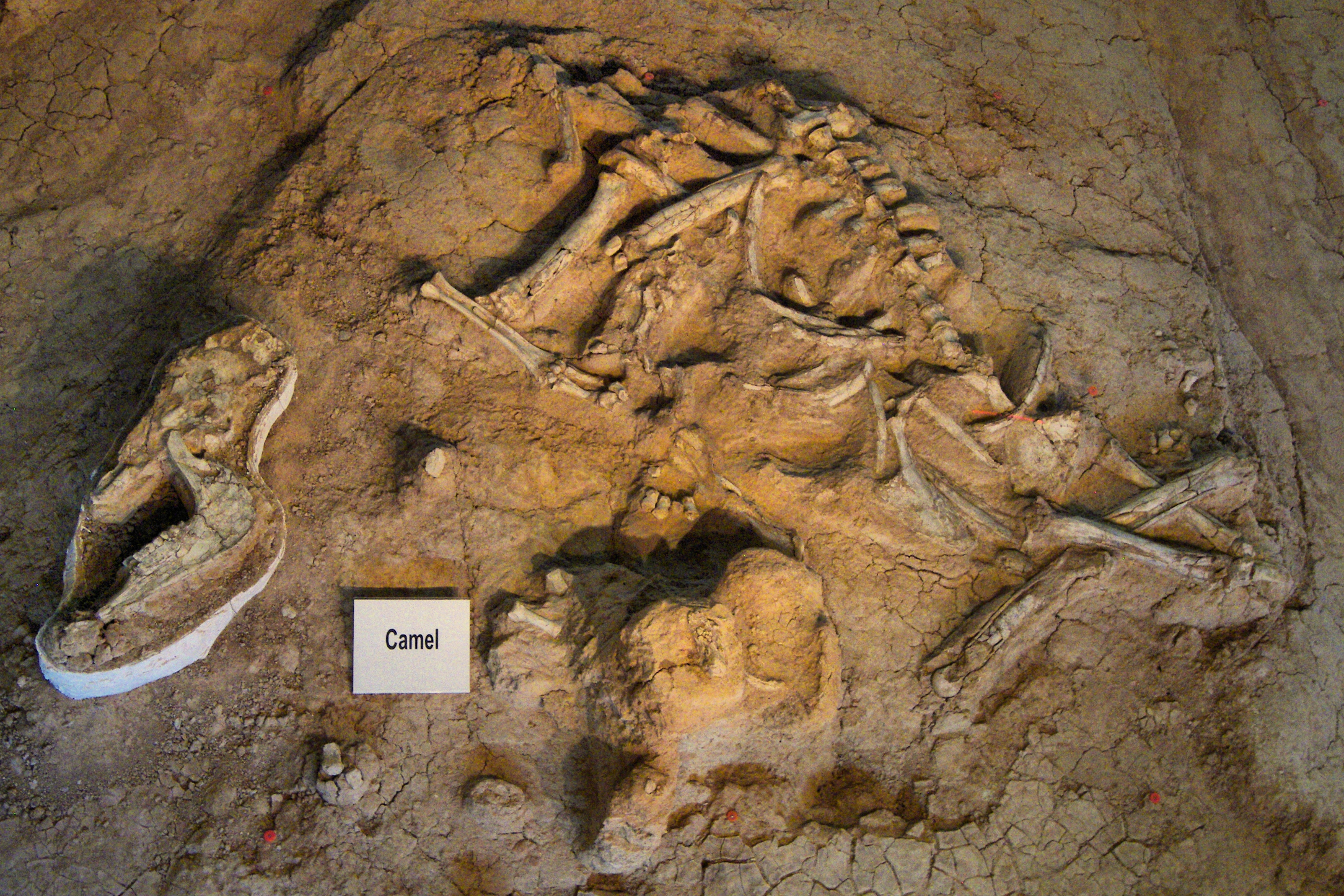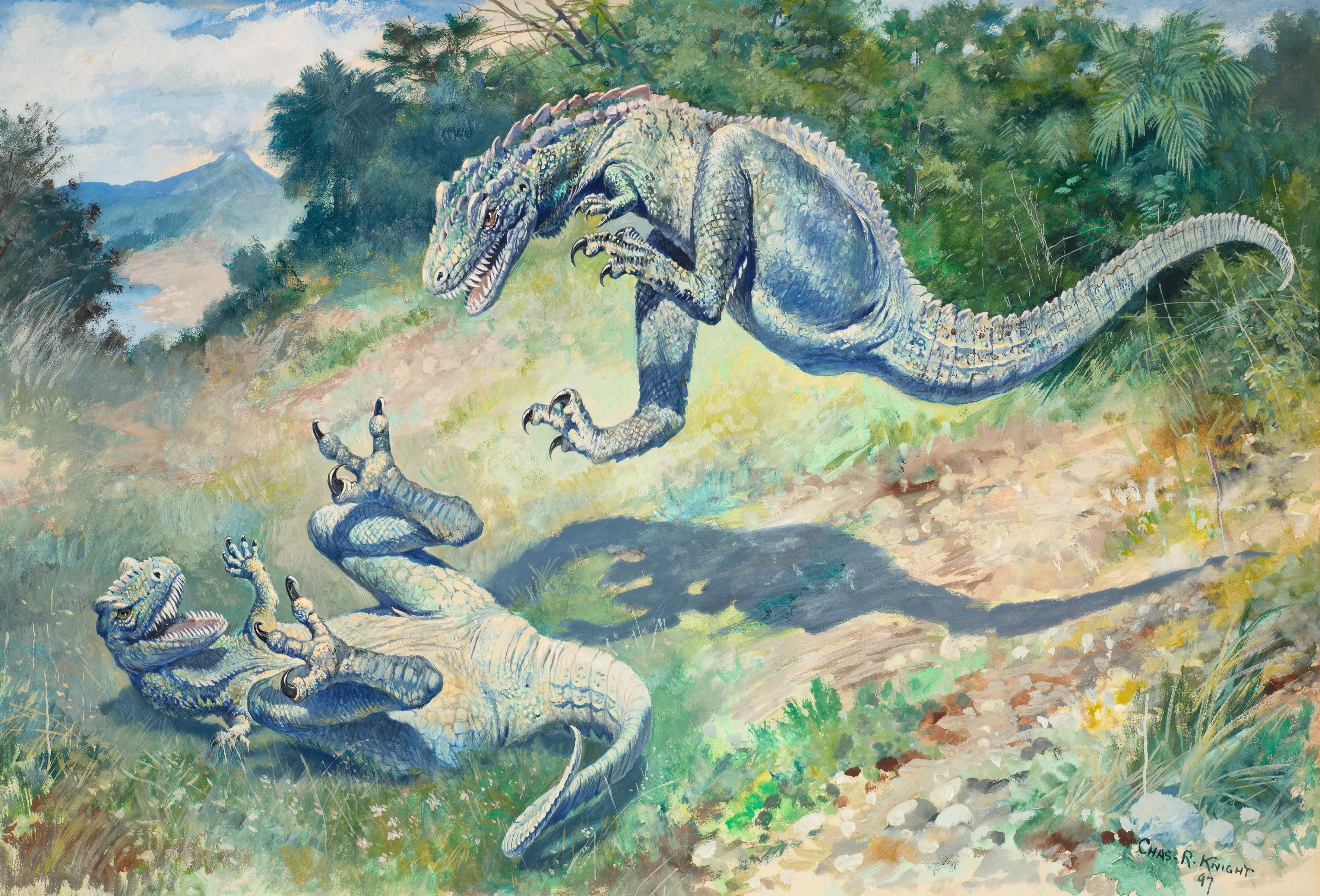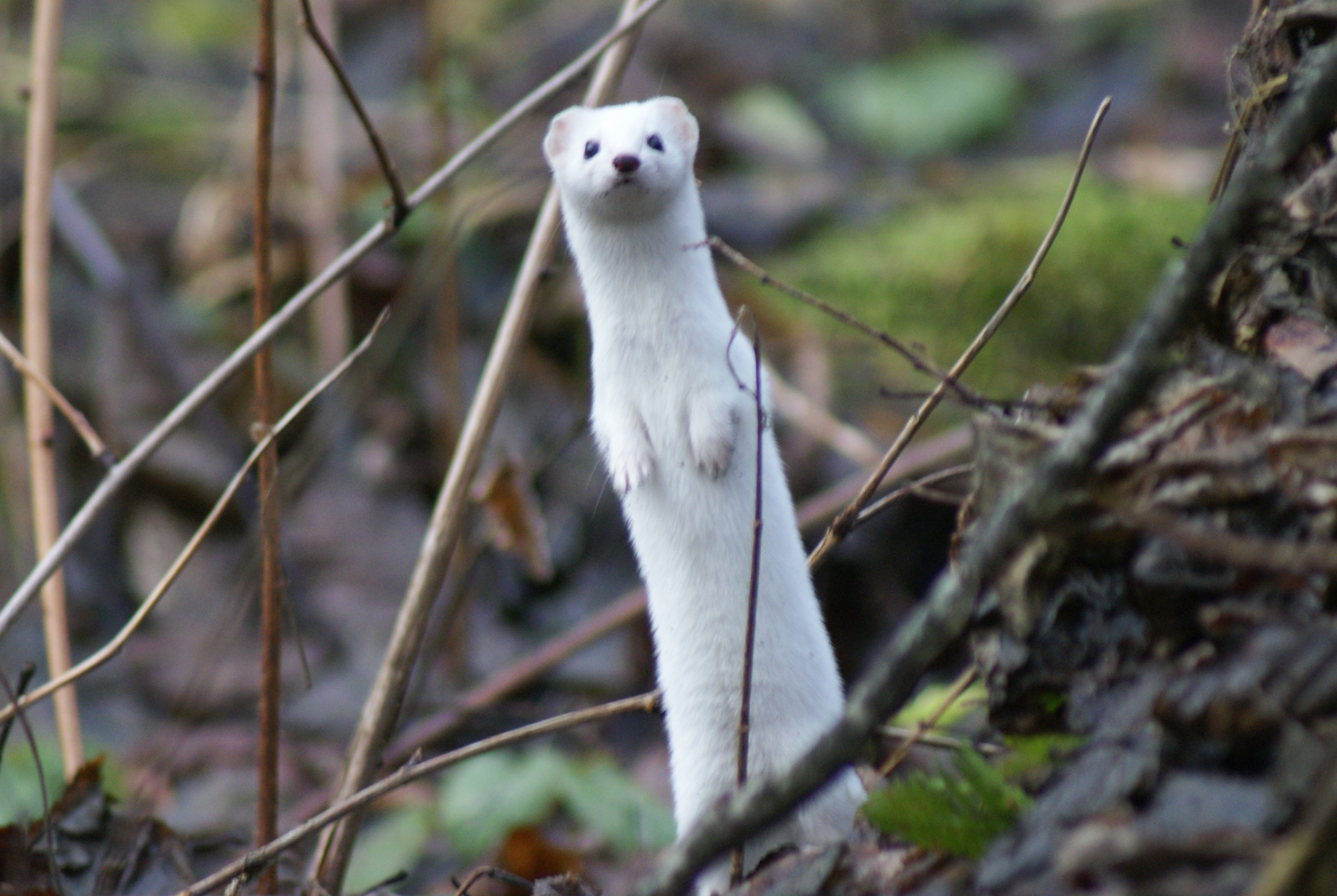|
Smilodon Populator
''Smilodon'' is a genus of the extinct machairodont subfamily of the felids. It is one of the most famous prehistoric mammals and the best known saber-toothed cat. Although commonly known as the saber-toothed tiger, it was not closely related to the tiger or other modern cats. ''Smilodon'' lived in the Americas during the Pleistocene epoch (2.5 Year#mya, mya – 10,000 years ago). The genus was named in 1842 based on fossils from Brazil; the generic name means "scalpel" or "two-edged knife" combined with "tooth". Three species are recognized today: ''S. gracilis'', ''S. fatalis'', and ''S. populator''. The two latter species were probably descended from ''S. gracilis'', which itself probably evolved from ''Megantereon''. The hundreds of individuals obtained from the La Brea Tar Pits in Los Angeles constitute the largest collection of ''Smilodon'' fossils. Overall, ''Smilodon'' was more robustly built than any Neontology, extant cat, with particularly well-d ... [...More Info...] [...Related Items...] OR: [Wikipedia] [Google] [Baidu] |
Pleistocene
The Pleistocene ( , often referred to as the ''Ice age'') is the geological Epoch (geology), epoch that lasted from about 2,580,000 to 11,700 years ago, spanning the Earth's most recent period of repeated glaciations. Before a change was finally confirmed in 2009 by the International Union of Geological Sciences, the cutoff of the Pleistocene and the preceding Pliocene was regarded as being 1.806 million years Before Present (BP). Publications from earlier years may use either definition of the period. The end of the Pleistocene corresponds with the end of the last glacial period and also with the end of the Paleolithic age used in archaeology. The name is a combination of Ancient Greek grc, label=none, πλεῖστος, pleīstos, most and grc, label=none, καινός, kainós (latinized as ), 'new'. At the end of the preceding Pliocene, the previously isolated North and South American continents were joined by the Isthmus of Panama, causing Great American Interchang ... [...More Info...] [...Related Items...] OR: [Wikipedia] [Google] [Baidu] |
La Brea Tar Pits
La Brea Tar Pits is an active paleontological research site in urban Los Angeles. Hancock Park was formed around a group of tar pits where natural asphalt (also called asphaltum, bitumen, or pitch; ''brea'' in Spanish) has seeped up from the ground for tens of thousands of years. Over many centuries, the bones of trapped animals have been preserved. The George C. Page Museum is dedicated to researching the tar pits and displaying specimens from the animals that died there. La Brea Tar Pits is a registered National Natural Landmark. Formation Tar pits are composed of heavy oil fractions called gilsonite, which seeps from the Earth as oil. Crude oil seeps up along the 6th Street Fault from the Salt Lake Oil Field, which underlies much of the Fairfax District north of Hancock Park. The oil reaches the surface and forms pools, becoming asphalt as the lighter fractions of the petroleum biodegrade or evaporate. The asphalt then normally hardens into stubby mounds. The pools and mou ... [...More Info...] [...Related Items...] OR: [Wikipedia] [Google] [Baidu] |
Pleistocene Megafauna
Pleistocene megafauna is the set of large animals that lived on Earth during the Pleistocene epoch. Pleistocene megafauna became extinct during the Quaternary extinction event resulting in substantial changes to ecosystems globally. The role of humans in causing Pleistocene megafaunal extinctions is controversial. Megafauna are any animals with an adult body weight of over . Pleistocene megafauna include the straight-tusked elephant, cave bear (''Ursus spelaeus''), interglacial rhinoceros (''Stephanorhinus''), heavy-bodied Asian antelope ('' Spirocerus''), Eurasian hippopotamuses, woolly rhinoceros, mammoths, giant deer, sabre-toothed cat (''Homotherium''), cave lion, and the leopard in Europe. Paleoecology The last glacial period, commonly referred to as the 'Ice Age', spanned 125,000 to 14,500 years ago and was the most recent glacial period within the current ice age which occurred during the final years of the Pleistocene epoch. The Ice Age reached its peak during the ... [...More Info...] [...Related Items...] OR: [Wikipedia] [Google] [Baidu] |
Shrubland
Shrubland, scrubland, scrub, brush, or bush is a plant community characterized by vegetation dominated by shrubs, often also including grasses, herbs, and geophytes. Shrubland may either occur naturally or be the result of human activity. It may be the mature vegetation type in a particular region and remain stable over time, or a transitional community that occurs temporarily as the result of a disturbance, such as fire. A stable state may be maintained by regular natural disturbance such as fire or browsing. Shrubland may be unsuitable for human habitation because of the danger of fire. The term was coined in 1903. Shrubland species generally show a wide range of adaptations to fire, such as heavy seed production, lignotubers, and fire-induced germination. Botanical structural form In botany and ecology a shrub is defined as a much-branched woody plant less than 8 m high and usually with many stems. Tall shrubs are mostly 2–8 m high, small shrubs 1–2 m high and su ... [...More Info...] [...Related Items...] OR: [Wikipedia] [Google] [Baidu] |
Camelops
''Camelops''Being occasionally called ''Western Camel'' or ''Yesterday's Camel''. is an extinct genus of camels that lived in North and Central America, ranging from Alaska to Guatemala, from the middle Pliocene to the end of the Pleistocene. It is more closely related to the Old World dromedary and bactrian and wild bactrian camels than the New World guanaco, vicuña, alpaca and llama; making it a true camel of the Camelini tribe. Its name is derived from the Ancient Greek (, "camel") and (, "face"), i.e. "camel-face". Taxonomy and evolution The genus ''Camelops'' first appeared during the middle Pliocene (about 4.0–3.2 million years ago (Mya) in southern North America and became extinct at the end of the Pleistocene (around 11,000 years ago). Despite the fact that camels are popularly associated with the deserts of Asia and Africa, the family Camelidae, which comprises camels and llamas, originated in North America during the middle Eocene period, at least 44 Mya. Both ... [...More Info...] [...Related Items...] OR: [Wikipedia] [Google] [Baidu] |
Bison Antiquus
''Bison antiquus'', the antique bison or ancient bison, is an extinct species of bison that lived in Late Pleistocene North America until around 10,000 years ago. It was one of the most common large herbivores on the North American continent during the late Pleistocene, and is a direct ancestor of the living American bison along with ''Bison occidentalis''.C. G Van Zyll de Jong , 1986, A systematic study of recent bison, with particular consideration of the wood bison (Bison bison athabascae Rhoads 1898), p.53, National Museum of Natural Sciences History The first described remains of ''Bison antiquus'' were collected at Big Bone Lick, Kentucky in Pleistocene deposits in the 1850s and only consisted of a fragmentary posterior skull and a nearly complete horn core. The fossil ( ANSP 12990) was briefly described by Joseph Leidy in 1852. Although the original fossils were fragmentary, a complete skull of an old male was discovered in southern California and were described as a ... [...More Info...] [...Related Items...] OR: [Wikipedia] [Google] [Baidu] |
Herbivore
A herbivore is an animal anatomically and physiologically adapted to eating plant material, for example foliage or marine algae, for the main component of its diet. As a result of their plant diet, herbivorous animals typically have mouthparts adapted to rasping or grinding. Horses and other herbivores have wide flat teeth that are adapted to grinding grass, tree bark, and other tough plant material. A large percentage of herbivores have mutualistic gut flora that help them digest plant matter, which is more difficult to digest than animal prey. This flora is made up of cellulose-digesting protozoans or bacteria. Etymology Herbivore is the anglicized form of a modern Latin coinage, ''herbivora'', cited in Charles Lyell's 1830 ''Principles of Geology''.J.A. Simpson and E.S.C. Weiner, eds. (2000) ''The Oxford English Dictionary'', vol. 8, p. 155. Richard Owen employed the anglicized term in an 1854 work on fossil teeth and skeletons. ''Herbivora'' is derived from Latin ''herba' ... [...More Info...] [...Related Items...] OR: [Wikipedia] [Google] [Baidu] |
Predation
Predation is a biological interaction where one organism, the predator, kills and eats another organism, its prey. It is one of a family of common feeding behaviours that includes parasitism and micropredation (which usually do not kill the host) and parasitoidism (which always does, eventually). It is distinct from scavenging on dead prey, though many predators also scavenge; it overlaps with herbivory, as seed predators and destructive frugivores are predators. Predators may actively search for or pursue prey or wait for it, often concealed. When prey is detected, the predator assesses whether to attack it. This may involve ambush or pursuit predation, sometimes after stalking the prey. If the attack is successful, the predator kills the prey, removes any inedible parts like the shell or spines, and eats it. Predators are adapted and often highly specialized for hunting, with acute senses such as vision, hearing, or smell. Many predatory animals, both vertebrate and inv ... [...More Info...] [...Related Items...] OR: [Wikipedia] [Google] [Baidu] |
Paleoart
Paleoart (also spelled palaeoart, paleo-art, or paleo art) is any original artistic work that attempts to depict prehistoric life according to scientific evidence. Works of paleoart may be representations of fossil remains or imagined depictions of the living creatures and their ecosystems. While paleoart is typically defined as being scientifically informed, it is often the basis of depictions of prehistoric animals in popular culture, which in turn influences public perception of and fuels interest in these animals. The word paleoart is also used in other informal sense, as a name for prehistoric art, most often cave paintings. Alternative concept of this term is the domain of archeological society. The term "paleoart"–which is a portmanteau of ''paleo'', the Ancient Greek word for "old", and "art"–was introduced in the late 1980s by Mark Hallett for art that depicts subjects related to paleontology, but is considered to have originated as a visual tradition in early 180 ... [...More Info...] [...Related Items...] OR: [Wikipedia] [Google] [Baidu] |
Coat (animal)
Coat is the nature and quality of a mammal's fur. In the animal fancy, coat is an attribute that reflects the quality of a specimen's breeding as well as the level of the animal's care, conditioning, and management. Coat is an integral aspect of the judging at competitions such as a conformation dog show, a cat show, a horse show (especially showmanship classes), or a rabbit show. The pelage of a show animal may be divided into different types of hair, fur or wool with a texture ranging from downy to spiky. In addition, the animal may be single-coated or may have a number of coats, such as an undercoat and a topcoat (also called an ''outer coat'' or, sometimes, ''overcoat''), which is made up of guard hair. The state of the coat is considered an indication of the animal's breeding and health. Animals might have different coat quality for different seasons. Normally, animals with fur or hair body coats may develop a thicker and/or longer winter coat in colder times of the yea ... [...More Info...] [...Related Items...] OR: [Wikipedia] [Google] [Baidu] |
South America
South America is a continent entirely in the Western Hemisphere and mostly in the Southern Hemisphere, with a relatively small portion in the Northern Hemisphere at the northern tip of the continent. It can also be described as the southern subregion of a single continent called America. South America is bordered on the west by the Pacific Ocean and on the north and east by the Atlantic Ocean; North America and the Caribbean Sea lie to the northwest. The continent generally includes twelve sovereign states: Argentina, Bolivia, Brazil, Chile, Colombia, Ecuador, Guyana, Paraguay, Peru, Suriname, Uruguay, and Venezuela; two dependent territories: the Falkland Islands and South Georgia and the South Sandwich Islands; and one internal territory: French Guiana. In addition, the ABC islands of the Kingdom of the Netherlands, Ascension Island (dependency of Saint Helena, Ascension and Tristan da Cunha, a British Overseas Territory), Bouvet Island ( dependency of Norway), Pa ... [...More Info...] [...Related Items...] OR: [Wikipedia] [Google] [Baidu] |
North America
North America is a continent in the Northern Hemisphere and almost entirely within the Western Hemisphere. It is bordered to the north by the Arctic Ocean, to the east by the Atlantic Ocean, to the southeast by South America and the Caribbean Sea, and to the west and south by the Pacific Ocean. Because it is on the North American Plate, North American Tectonic Plate, Greenland is included as a part of North America geographically. North America covers an area of about , about 16.5% of Earth's land area and about 4.8% of its total surface. North America is the third-largest continent by area, following Asia and Africa, and the list of continents and continental subregions by population, fourth by population after Asia, Africa, and Europe. In 2013, its population was estimated at nearly 579 million people in List of sovereign states and dependent territories in North America, 23 independent states, or about 7.5% of the world's population. In Americas (terminology)#Human ge ... [...More Info...] [...Related Items...] OR: [Wikipedia] [Google] [Baidu] |







_grazing_-_20050809.jpg)
_with_its_prey.jpg)



.jpg)